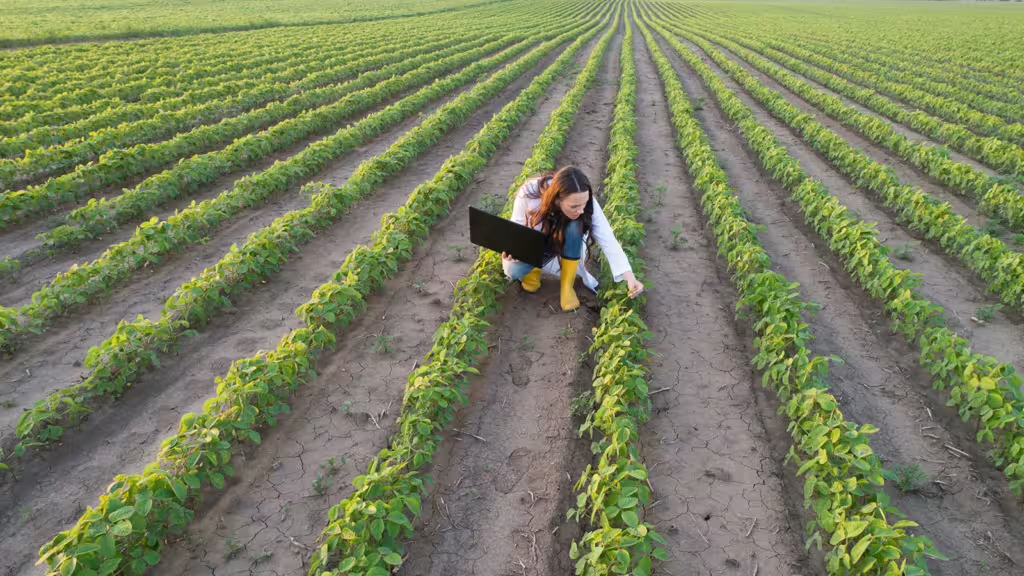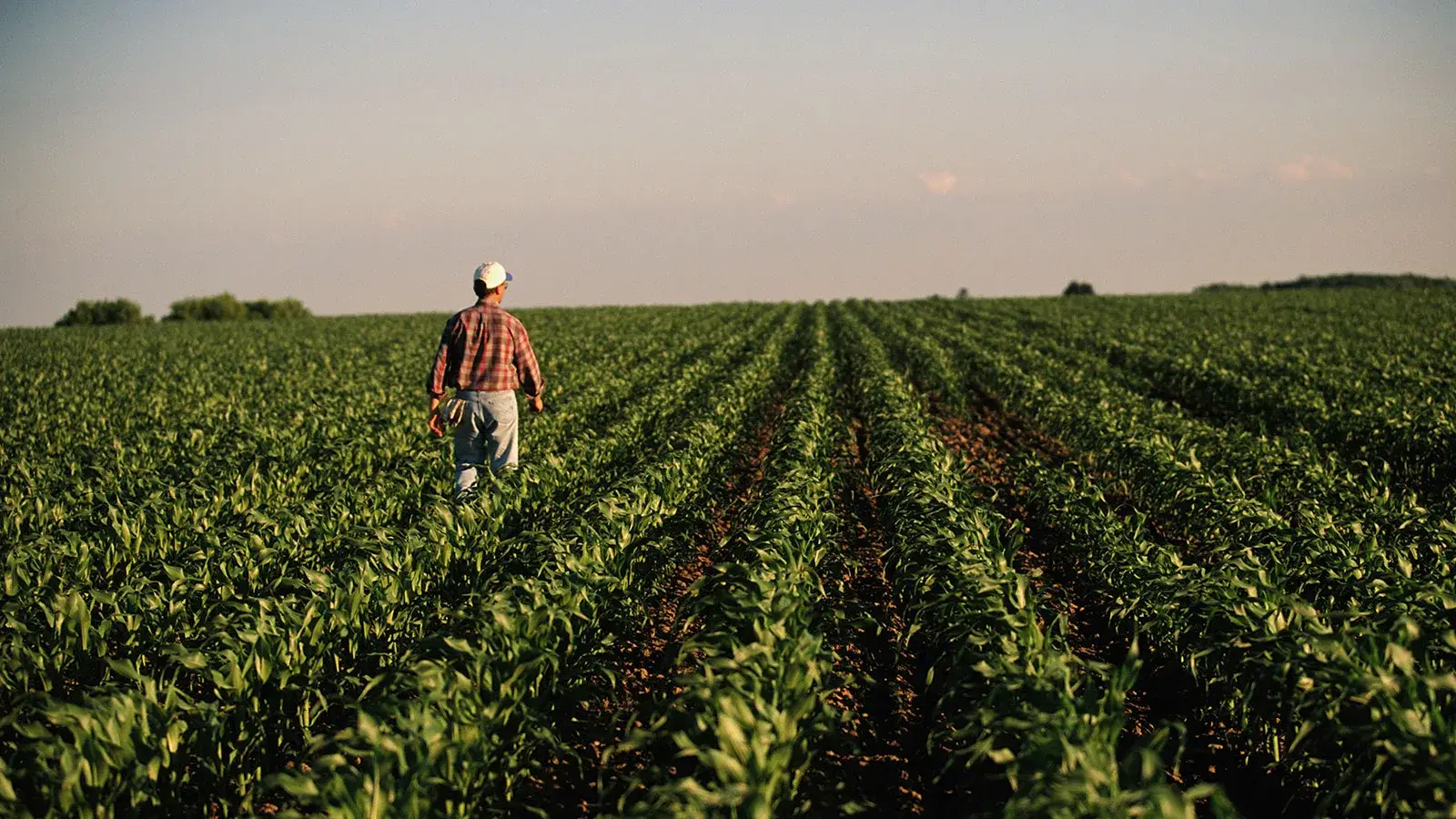Authors
Joris Nagelhout | Intern | WBCSD, Kate Newbury-Hyde | Senior Manager | WBCSD
To thrive within planetary boundaries by 2050, businesses must not only reduce emissions but also become more resilient against the impacts of climate change. Scope 3 emissions – those outside direct company control but occurring throughout supply chains – emerge as a key lever for managing risk and securing long-term competitiveness.
Unpacking the Climate Threat to Global Food Chains
In February this year American farmers sued the US Agriculture Department for taking down information related to climate change from their website. They argue that the long-term weather data, funding information, insights in new agricultural techniques and strategies is essential for farmers’ business planning, as rising temperatures and extreme weather events lead to hundreds of billions of dollars’ worth of damage in crops and livestock each year. They are not the first to take legal action against governments on climate change issues; last year Swiss farmers made the case that government inaction is threatening the continuation of their farms. These cases highlight that farmers recognize the importance of reducing climate-related risks for the sustainability of their businesses, as well as for the broader food system.
To deal with the risks of climate change, improved climate mitigation and resilience are needed not only for farmers, but for actors along the entire agrifood value chain. This was demonstrated by recent price fluctuations of coffee and cocoa caused by climate change which not only severely impacted farmers, but also traders, manufacturers and retailers. Such climate disruptions of food production can have broader societal consequences too, particularly in terms of food and nutrition security; crop failures have led to surging prices of affordable and nutritious commodities like potatoes and durum wheat, disproportionally affecting the most vulnerable communities. These developments will become increasingly critical in the coming decades, as geopolitical instability and increasingly extreme weather are projected to reduce global production levels of agricultural commodities by as much as 35% by 2050.
Unlocking Scope 3: The Essential Link in Agrifood Climate Strategy
In the greenhouse gas inventory of a typical agrifood corporation most emissions arise within the value chain and are therefore categorized as Scope 3 emissions. For food companies ~90% in scope 3 upstream and for agri-input providers ~50% in scope 3 downstream, all of which are predominantly a result of land-based emissions. However, while companies often have a good impact on their direct emissions (scope 1) and those indirectly emitted through purchased energy (scope 2), the ability to impact their scope 3 emissions is often more challenging due to the complexity of agrifood supply chains. Such emissions are shared between upstream and downstream actors, making collaboration across the value chain of vital importance to address them.
The Business Case for Getting Scope 3 Right
This lack of understanding of scope 3 emissions poses considerable business risks. To future-proof agrifood supply chains, businesses need credible data and transparency on scope 3 emissions; disclosing it is increasingly important for mobilizing financial capital, to adhere to government regulations and to be able to make credible claims to stakeholders. Therefore, understanding scope 3 emissions can help businesses attract investment as investors see the long-term focus that comes with a strong understanding of emissions as ‘future-proof’. It can also help avoid legal issues, costs of non-compliance or even exclusion of markets (e.g. the European Union’s Corporate Sustainability Reporting Directive). Additionally, businesses might lose their social license to operate in markets that are increasingly competitive, as well as socially and environmentally aware.
WBCSD Scope 3 Toolkit: Practical Help for Agrifood Companies
To support companies in this WBCSD has published a new Scope 3 Toolkit, including two newly published resources:
- Navigator – the what, why and how of scope 3 for agrifood, designed to show your company’s C-suite why scope 3 is critical for your business, while helping sustainability practitioners to successfully act in the scope 3 ecosystem.
- Data MRV Guidance – practitioners’ guidance for measurement, reporting and verification (MRV) of scope 3 to act and account for the outcomes of agricultural practice change with the overarching aim of harmonizing data collection.
Join the Movement: WBCSD’s Projects in Agrifood and How You Can Get Involved
In addition to the Scope 3 Toolkit, WBCSD’s Agriculture & Food pathway supports private sector efforts to decarbonize agrifood systems across all three key impact areas: agricultural production, land-use change and consumer diets.
Find out more on how WBCSD supports companies to decarbonize agrifood systems
At the foundation of these three impact areas we have identified the need for decision-useful data that connects stakeholders across the value chain. WBCSD continues to focus on metrics and methods with the aim of supporting corporate decision-making and collective industry-wide collaboration around these key action areas – prioritizing farmers’ needs while doing so.
To get involved with this work, you can find all our land-based Scope 3 resources on the WBCSD Scope 3 toolkit for A&F. Please send us your feedback and share with other stakeholders who might benefit from them. Also feel free to reach out to Kate Newbury-Hyde at newbury@wbcsd.org.
Outline
Related
Content

Unlocking finance for food system transformation: why metrics matter
15 October, 2024

Transforming Menus, Transforming Diets: The Power of Procurement for Health and Sustainability
12 March, 2025

WBCSD launches a playbook to accelerate food and nutrition security through food fortification
26 February, 2025
